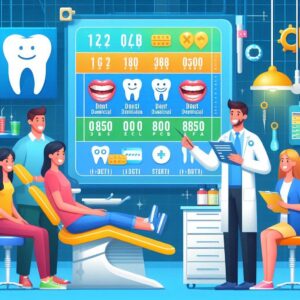The Ultimate Guide to Dental Codes for Medicaments
Dental coding is a critical aspect of modern dentistry, ensuring accurate billing, insurance claims, and patient record-keeping. Among the most frequently used codes are those related to dental medicaments—substances used for therapeutic purposes in dental treatments. From antimicrobial agents to pain-relief medications, proper coding ensures compliance, reduces claim denials, and enhances practice efficiency.
This guide provides an in-depth exploration of dental codes for medicaments, covering their applications, documentation requirements, and billing best practices. Whether you’re a dentist, hygienist, or billing specialist, this resource will help you navigate the complexities of dental coding with confidence.

2. Understanding Dental Codes: An Overview
Dental procedures and treatments are classified using Current Dental Terminology (CDT) codes, maintained by the American Dental Association (ADA). These codes are updated annually to reflect advancements in dental care.
Medicament-related codes fall under D4000-D4999 (Periodontics) and D9000-D9999 (Adjunctive General Services), covering:
- Topical medications (e.g., fluoride varnish)
- Antimicrobial agents (e.g., Arestin®)
- Pain management medicaments (e.g., local anesthetics)
- Prescription medications dispensed by dentists
Proper use of these codes ensures accurate insurance claims, reduced audits, and improved revenue cycles.
3. Importance of Accurate Dental Coding for Medicaments
Miscoding can lead to:
✅ Claim denials (costing practices thousands annually)
✅ Compliance risks (potential legal issues)
✅ Lost revenue (undercoding or unbilled services)
A 2022 ADA report found that 30% of dental claims are denied due to coding errors, emphasizing the need for precision.
4. Common Dental Codes for Medicaments (D4000-D4999)
| Code | Description | Usage Example |
|---|---|---|
| D4381 | Localized antimicrobial delivery | Placing Arestin® in periodontal pockets |
| D9630 | Medications dispensed by dentist | Prescribing antibiotics for infection |
| D9910 | Application of desensitizing medicament | Treating tooth sensitivity after a filling |
5. Breakdown of Frequently Used Medicament Codes
A. D4249 – Clinical Removable Prosthetic Modification
- Used when adjusting dentures or prosthetics with medicaments (e.g., soft reline materials).
- Documentation must include reason for modification and material used.
B. D4381 – Localized Delivery of Antimicrobial Agents
- Applies to periodontal treatments where antibiotics (e.g., doxycycline gel) are placed in gum pockets.
- Requires pre- and post-treatment pocket depth measurements.
C. D9630 – Medications Dispensed by a Dentist for Home Use
- Covers prescriptions given directly by the dentist (e.g., pain relievers, antibiotics).
- Must include patient name, dosage, and instructions in records.
6. How to Properly Document and Bill for Dental Medicaments
Best practices include:
✔ Detailed clinical notes (justifying medical necessity)
✔ Accurate CDT code selection (avoiding unspecified codes)
✔ Supporting documentation (X-rays, periodontal charts)
Example:
- Correct: “D4381 – Placed minocycline microspheres in 4 periodontal pockets (5mm depth) for localized infection control.”
- Incorrect: “Applied antibiotic in gums.”
7. Insurance Considerations and Reimbursement Challenges
- Medicare vs. Private Insurance: Some codes (e.g., D9630) may not be covered by Medicare.
- Pre-authorization Requirements: Certain medicaments (e.g., high-cost antimicrobials) may need prior approval.
Pro Tip: Use modifier codes (e.g., -22 for increased procedural services) when applicable.
8. Emerging Trends in Dental Medicament Coding
- Teledentistry Codes: New codes (e.g., D9995) for remote medication management.
- CBD-Based Medicaments: Emerging coding needs for cannabis-derived dental treatments.
9. Common Mistakes in Dental Coding and How to Avoid Them
❌ Using outdated codes (always refer to the latest CDT manual).
❌ Lacking documentation (leads to claim denials).
❌ Unbundling services (billing separately for included services).
Solution: Regular staff training and automated coding software.
10. Conclusion
Accurate dental coding for medicaments is essential for compliance, revenue optimization, and patient care. By understanding key codes (D4381, D9630), documenting thoroughly, and staying updated on trends, dental practices can minimize errors and maximize reimbursements. Always refer to the latest ADA CDT manual and consult with billing experts when in doubt.
11. FAQs
Q1: What is the most commonly misused dental medicament code?
A: D4381 is often misapplied without proper periodontal documentation.
Q2: Can I bill for fluoride varnish under medical insurance?
A: Some Medicaid plans cover D1206, but private medical insurance usually does not.
Q3: How often are CDT codes updated?
A: The ADA releases updates annually (effective January 1).
12. Additional Resources
- ADA CDT Code Manual (Latest Edition)


